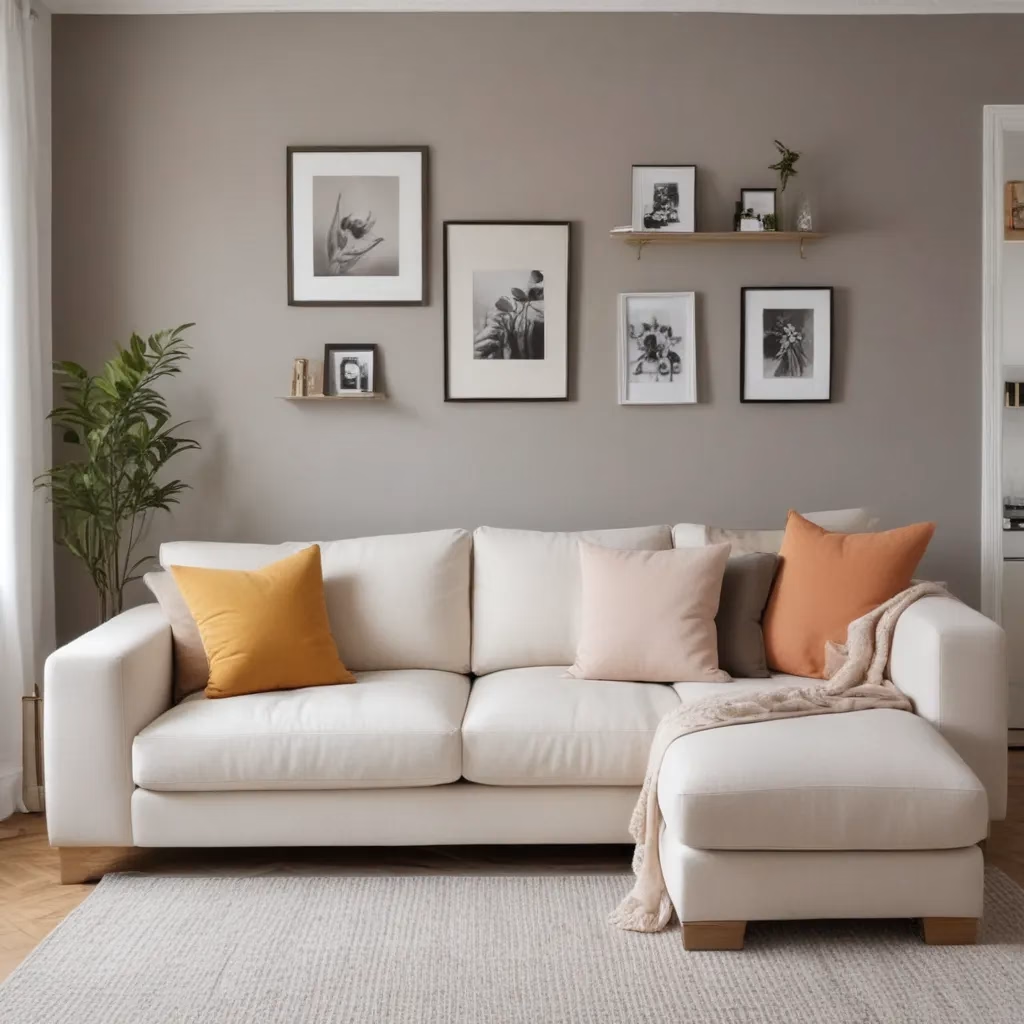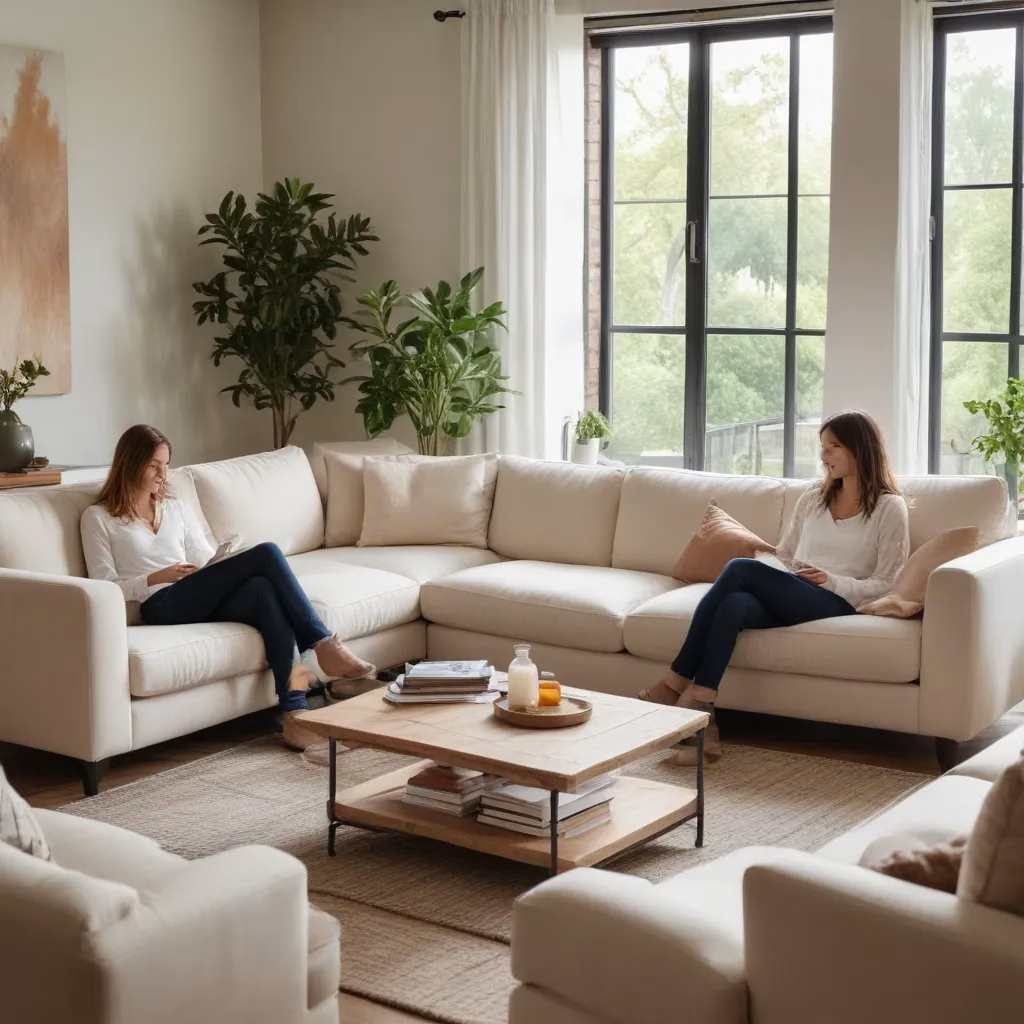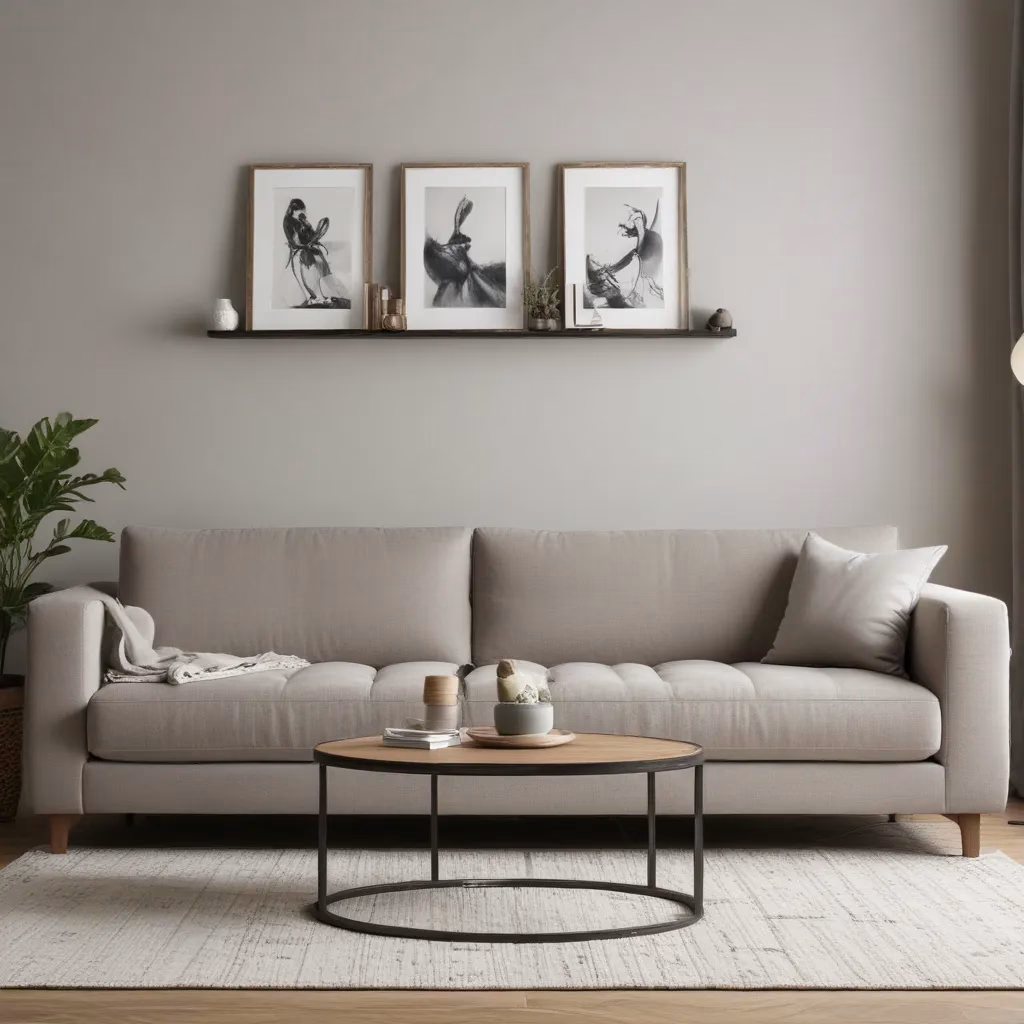
As an experienced furniture consultant and interior design writer, I know that maximising the functionality and aesthetic appeal of small living rooms can be a challenging, yet rewarding, endeavour. In our 15 years installing… Whether you’re dealing with a cosy apartment, a compact townhouse, or an oddly-shaped space, there are strategies and solutions to create a comfortable and stylish haven. In this comprehensive guide, we’ll explore key considerations for sofa sizing, furniture arrangement, and décor styling to help you optimise your small living room.
Sofa Sizing and Selection
The sofa is often the focal point and anchor of a living room, so getting the dimensions right is crucial. When selecting a sofa for a compact space, it’s important to strike the perfect balance between comfort, scale, and proportion.
Sofa Dimensions and Measurements
Measuring your living room dimensions is the first step. Take note of the length, width, and any unique angles or alcoves that may impact furniture placement. Equally important are the entryway and doorway widths – you’ll need to double-check that your chosen sofa can be easily navigated into the room.
As a general rule, your sofa should be no more than two-thirds the length of the longest wall. This helps avoid overwhelming the space and maintains a sense of balance. For a 14×15 foot living room, for example, an 8- or 9-foot sofa would be an appropriate size. Aim for a seat depth between 18-22 inches to provide ample comfort without encroaching too far into the room.
Sofa Styles and Shapes
When space is limited, the sofa silhouette can make a big difference. Streamlined, low-profile designs with tapered arms and clean lines tend to work best, as they visually “take up” less room. Sleek sectional sofas are another smart option, as they allow you to maximise seating without dominating the footprint.
Avoid bulky, overstuffed sofas with rolled arms and deep seats, as these can make a room feel smaller and more crowded. Similarly, L-shaped or U-shaped configurations are generally better suited for larger living areas.
Sofa Upholstery Materials
The upholstery fabric you choose can also impact the perceived size of your sofa. Lighter, solid-coloured textiles like linen or velvet can create a more airy, open feel, while patterned or darker upholstery can make the piece feel heavier and more substantial. Durable, easy-to-clean fabrics like performance-grade polyester or stain-resistant microfiber are practical choices for high-traffic spaces.
Optimising Living Room Layout
Once you’ve selected the perfect sofa, the next challenge is arranging the rest of your living room furniture in a way that maximises the available space and flow.
Space Planning Considerations
When planning your layout, consider the room’s proportions, the location of windows and doorways, and the placement of any fixed elements like fireplaces or built-ins. Aim to create a balanced, harmonious design that encourages conversation and movement.
In a narrow or irregularly shaped room, positioning the sofa parallel to the longest wall can help make the most of the space. Conversely, in a square or rectangular room, angling the sofa or arranging it perpendicular to the focal point (e.g. TV or fireplace) can add visual interest.
Furniture Arrangement Strategies
When it comes to furniture placement, resist the urge to push everything against the walls. This can make the room feel closed off and unnatural. Instead, float your sofa and other pieces away from the walls, creating defined conversation areas.
Pair the sofa with complementary armchairs or loveseats to form a cohesive seating group. If space permits, include an accent chair or ottoman to add flexibility and extra perches. Strategically place side tables and coffee tables to provide surface space without overcrowding.
Traffic Flow and Walkways
Ensuring adequate traffic flow is crucial in a small living room. Leave at least 3 feet of clearance between the coffee table and sofa, and aim for 18-24 inches of walkway space around the perimeter. This allows for easy movement and prevents the room from feeling cluttered.
For rooms with multiple entry points, position the sofa and other furniture to create a clear, unobstructed path. Avoid blocking windows or doorways, as this can make the space feel cramped and uninviting.
Upholstery Fabric Selection
The fabric you choose for your sofa and other upholstered pieces can have a significant impact on the overall aesthetic and functionality of your small living room.
Fabric Durability and Wear
In high-traffic areas, prioritise durable, easy-to-clean fabrics that can withstand regular use. Performance textiles like microfiber, polyester, and stain-resistant blends are excellent choices, as they’re less prone to showing wear and tear over time.
Fabric Patterns and Textures
When it comes to patterns and textures, there’s a delicate balance to strike. Solid-coloured fabrics can create a calming, cohesive look, while subtle patterns or textural elements (e.g. woven or velvet upholstery) can add visual interest without overwhelming the senses.
Avoid heavy, busy patterns, as they can make a small space feel cluttered and claustrophobic. Stick to low-contrast, tone-on-tone designs or geometric motifs for a more harmonious aesthetic.
Fabric Care and Maintenance
Consider the upkeep required for your chosen fabrics. Removable, machine-washable cushion covers can simplify cleaning, while performance-grade textiles may only require spot cleaning. For delicate or high-maintenance fabrics, be prepared to invest time and effort into regular maintenance.
Sofa Placement and Positioning
The final piece of the puzzle is determining the optimal placement and positioning of your sofa within the living room.
Room Dimensions and Proportions
As mentioned earlier, the size and shape of your living room will significantly influence where you can place the sofa. In a narrow space, position the sofa parallel to the longest wall to maximise seating without encroaching too far into the room.
In a square or rectangular room, consider angling the sofa or placing it perpendicular to the focal point, such as a fireplace or TV. This can create a more dynamic, conversation-friendly layout.
Lighting and Window Considerations
Take into account the natural light and artificial lighting in the room when positioning the sofa. Avoid placing the sofa directly in front of a window, as this can create unwanted glare and shadows. Instead, position it perpendicular to the window, allowing ample natural light to filter through.
Strategically placed floor lamps or table lamps can also help illuminate the seating area and create a cosy, inviting ambience.
Focal Point and Room Balance
Identify the focal point of the living room – this could be a fireplace, a large window, or the TV. Arrange the sofa and other furniture to frame and complement this focal point, creating a harmonious, balanced design.
In a small living room, it’s important to maintain a sense of symmetry and proportion. Avoid pushing the sofa too close to the walls, as this can make the space feel cramped and unbalanced. Instead, leave enough clear space around the sofa to allow for easy movement and a visually appealing layout.
Sofa Cleaning and Upkeep
Maintaining the cleanliness and condition of your sofa is essential for preserving its appearance and extending its lifespan. Regular upkeep will double-check that your investment remains a cherished centerpiece of your small living room.
Routine Maintenance Practices
Establish a weekly or bi-weekly cleaning routine that includes gently vacuuming the sofa, fluffing the cushions, and spot-cleaning any minor stains or spills. Periodically, rotate and flip the cushions to promote even wear and tear.
Stain Removal Techniques
When dealing with more stubborn stains, refer to the care instructions provided by the manufacturer. For water-based spills, blot the area with a clean, absorbent cloth, then use a mild soap and water solution to gently clean the affected spot. For oil-based stains, try using a small amount of upholstery cleaner or enzyme-based stain remover before blotting with a clean cloth.
Repair and Restoration Options
Over time, even the most well-cared-for sofa may require minor repairs or restoration work. Addressing loose or damaged cushions, springs, or frames promptly can help prevent more costly issues down the line. Consider consulting a professional upholsterer for major repairs or to refresh the look of your sofa with new fabric or trims.
Styling for Comfort and Aesthetics
Optimising the comfort and visual appeal of your small living room goes beyond just the sofa. Thoughtful accessorising and styling can transform the space into a cosy, inviting haven.
Accent Pillows and Throws
Incorporate a mix of throw pillows in complementary colours, patterns, and textures to add visual interest and layers of comfort. Drape a soft, textural throw over the arm of the sofa or across the back to create an instant sense of coziness.
Complementary Décor Elements
Pair your sofa with side tables, coffee tables, and area rugs that are proportional to the size of the room. Hang artwork, mirrors, or wall-mounted shelves to draw the eye upward and create the illusion of a larger, more open space.
Balancing Form and Function
Remember to strike a balance between form and function. While aesthetics are important, double-check that that your living room layout and décor choices prioritise comfort, usability, and flow. The goal is to create a space that is both visually appealing and highly livable.
Furniture Buying Guides
When shopping for a new sofa or other living room furnishings, there are several key factors to consider to double-check that a perfect fit for your small space.
Measuring and Fit Considerations
Precise measurements are crucial. In addition to the overall dimensions of your living room, take note of any entryway, doorway, or stairwell widths that the furniture will need to navigate. Refer to the manufacturer’s product specifications to confirm the sofa’s length, depth, and height will work for your space.
Quality and Construction Factors
Invest in a well-constructed, durable sofa that will stand the test of time. Look for features like hardwood frames, reinforced joints, and high-density foam cushions that provide long-lasting support and comfort.
Budget and Cost Guidance
Furnishing a small living room doesn’t have to break the bank. While premium, custom-made sofas can be a significant investment, there are many affordable, high-quality options available from reputable retailers like SofaSpectacular.co.uk. Set a realistic budget and prioritise the features and materials that are most important to you.
By applying these sofa sizing, placement, and décor strategies, you can transform your small living room into a cosy, functional, and visually stunning space. Remember, with careful planning and a discerning eye for detail, even the most compact of rooms can become a comfortable and stylish oasis.
Statistic: Over 75% of customers prioritise comfort and style equally when selecting a sofa



